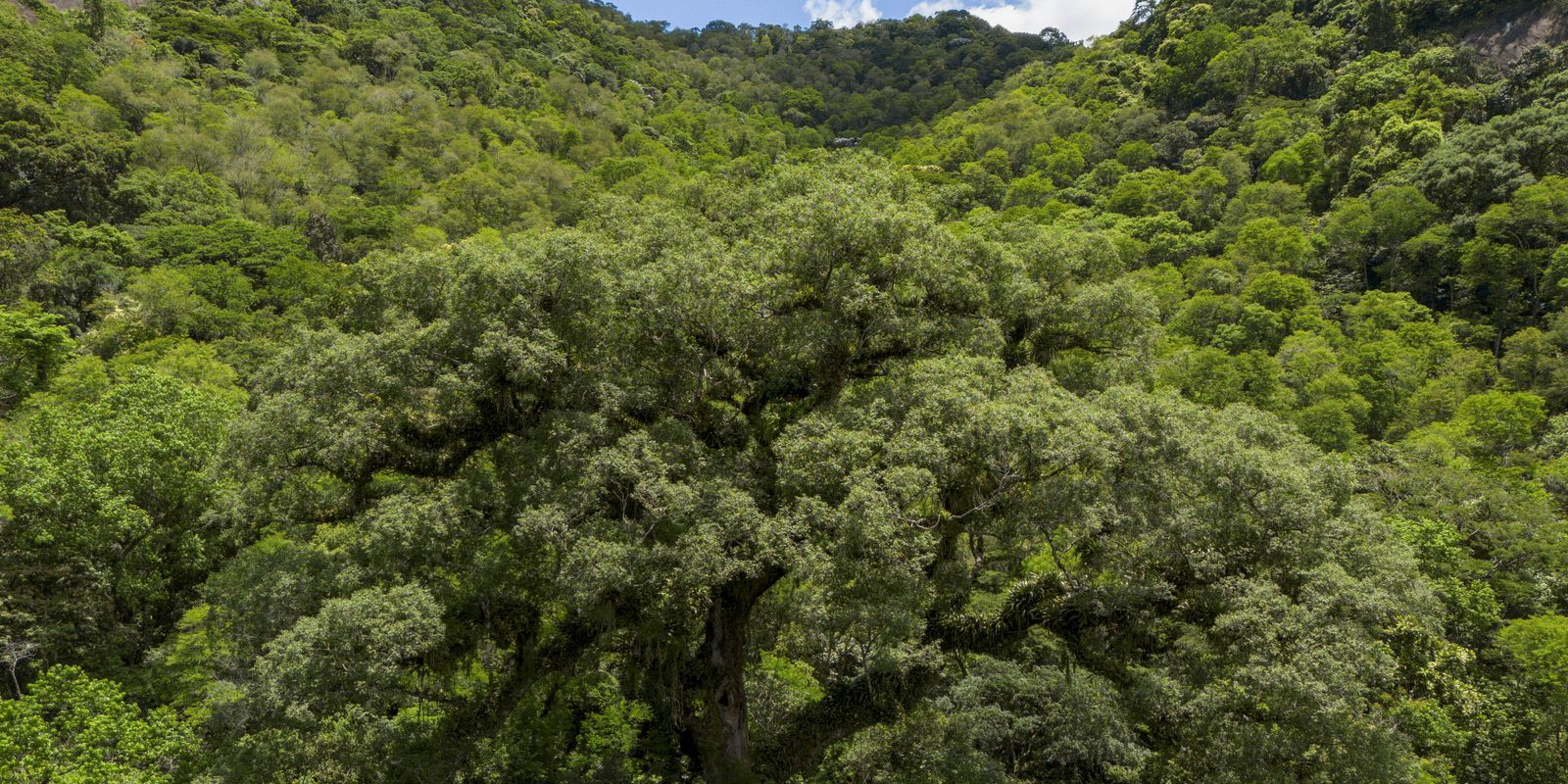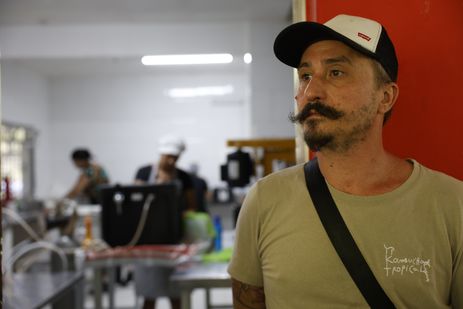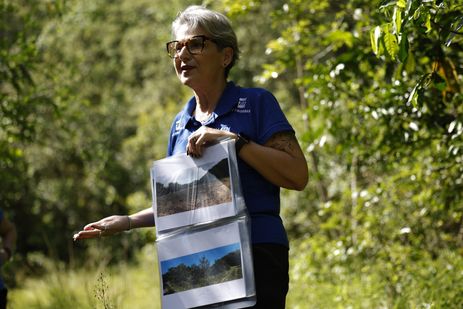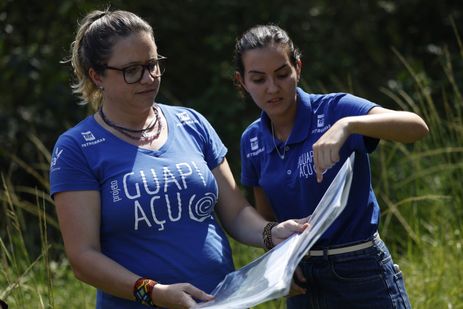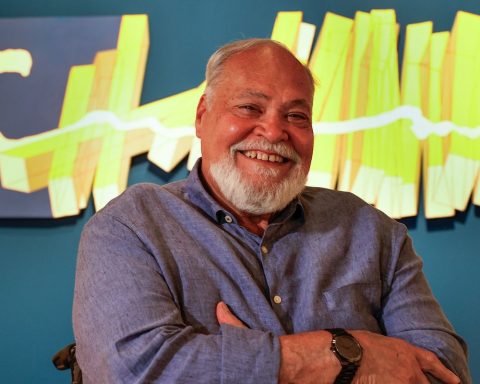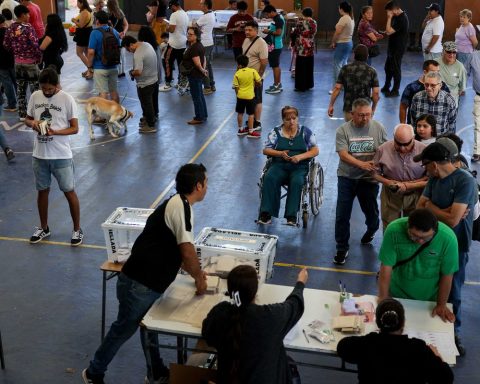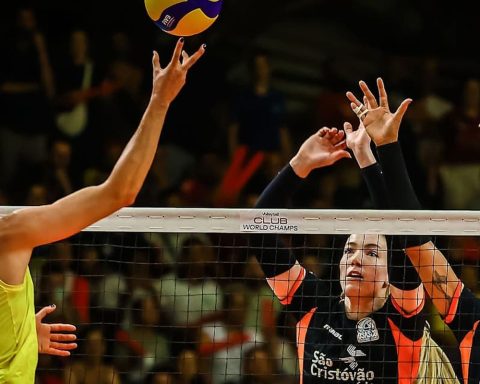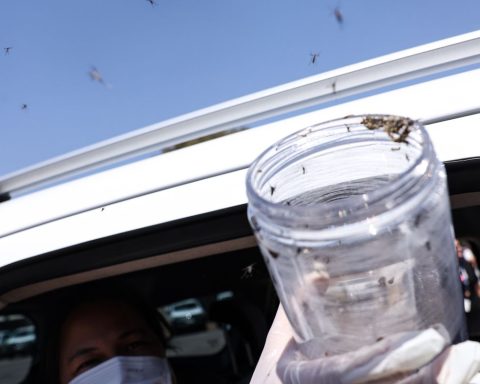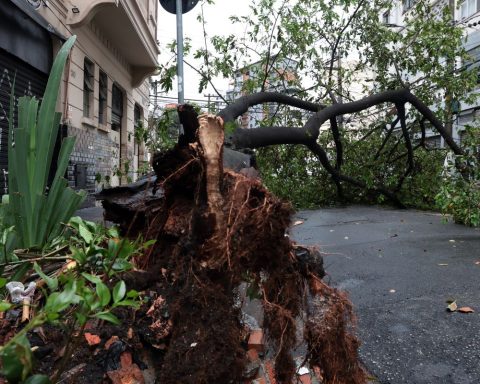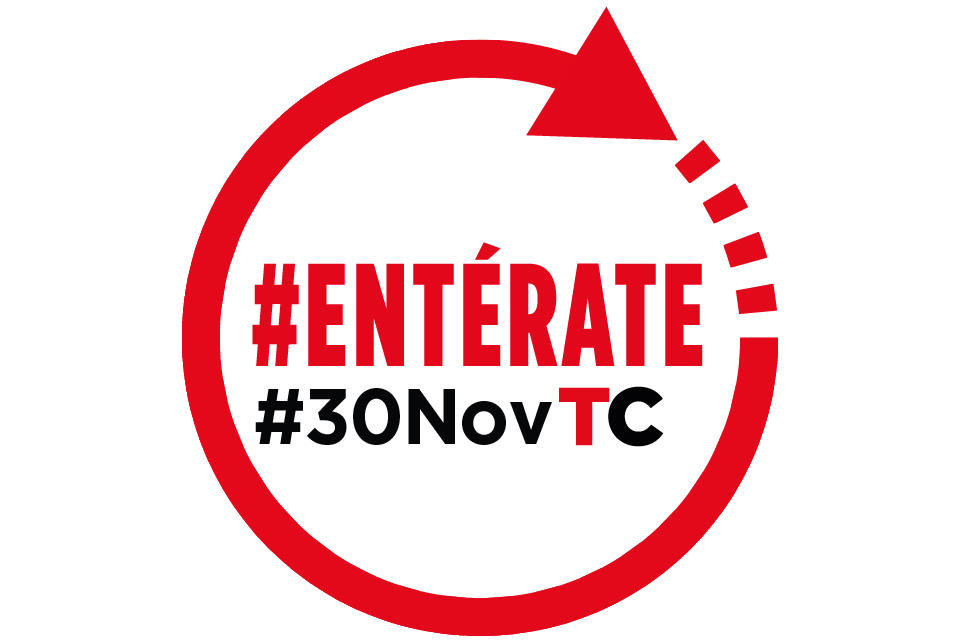In 2020, Mário Honorio Teixeira Filho’s farm in Cachoeiras de Macacu, Rio de Janeiro, ran out of water. The property had previously been used to plant cassava and yams. When he acquired the land, Honório wanted to fulfill his dream of raising cattle, transforming the place into pasture. Located in an area originally of Atlantic Forest, without native vegetation, and with fewer and fewer trees, the source could not resist and dried up.
This was the necessary warning for Honório to give in to pressure from his son, Mário Bruno Teixeira, to reforest at least part of the land. In less than a year, with the new vegetation, the water returned.
“We are not planting trees. We are actually planting water. That’s what we need”, says Leonardo de Mattos, who lives on the farm. Leonardo and Bruno produce together, on the property, Pi Kombucha Tropical, a fermented drink made from tea, sold in the city of Rio de Janeiro and São Paulo. “These days we saw an anteater. We never imagined that we would see an animal like that around here”, he says.
After his father’s death, the farm was managed by Bruno, who expanded the reforestation area. With 1 hectare, the equivalent of an official football field, in one year, water has already sprouted from the ground again. Now, reforestation is reaching another 3.8 hectares. “The air is cleaner, the animals are returning, we are seeing a lot of birds returning, which we didn’t see ten years ago. It’s a great joy”, says Leonardo.
The reforestation of the site was carried out as part of the Guapiaçu project, carried out by Ação Socioambiental (Asa) in partnership with Petrobras. The challenge of the project is to reforest private properties, like Bruno’s, showing producers and owners that having a forest area improves both the quality of production and the quality of life locally and in the entire surrounding area.
Private properties and the Atlantic Forest
The Atlantic Forest is the Brazilian biome with largest number of plant and animal species threatened with extinction in the country. The biome is distributed across 17 states (Alagoas, Bahia, Ceará, Espírito Santo, Goiás, Mato Grosso do Sul, Minas Gerais, Paraíba, Paraná, Pernambuco, Piauí, Rio de Janeiro, Rio Grande do Norte, Rio Grande do Sul, Santa Catarina, São Paulo and Sergipe).
Around 70% of the Brazilian population lives in Atlantic Forest areas. However, this may go unnoticed because according to the National Institute for Space Research (Inpe), 71.6% was deforested. According to the SOS Mata Atlântica Foundation, almost 80% of the remaining areas of the biome are on private properties.
“Our work to mobilize areas is done with the region’s landowners. We visited, we insisted, we talked. We have a lot of chair time, having coffee with the owners”, says the president of Ação Socioambiental and executive coordinator of the Guapiaçu Project, Gabriela Viana.
According to Viana, the benefits are many. “We are here, in the shade, there is sun next door, no one wants to be in the sun. We are taking advantage of this shade because it is an ecosystem service. It’s the first thing we feel. When we enter the forest, apart from the quantity and quality of water and biodiversity. It’s a value that not everyone realizes or can make tangible what we have in terms of biodiversity, especially in the Atlantic Forest.”
According to Viana, in the last six years, the project visited more than one thousand properties in Cachoeiras de Macacu, where it operates. The team was received in only 200 of them and 16 actually accepted the partnership. In total, to date, more than 500,000 seedlings have been planted across 300 hectares.
The owners provide the land and the project takes care of all the planting, selecting species native to the Atlantic Forest – also responding to requests from producers, if they want a specific species, as long as they are on the local flora list. It also carries out maintenance, ensuring that the trees are able to establish themselves, and the forest is able to maintain itself on its own. The cost is R$60,000 to R$90,000 per hectare, which is borne by the Guapiaçu project.
Forest corridors
The actions in Cachoeiras de Macacu have a specificity, there is the Três Picos State Park, the largest state park and also a place for the preservation of the Atlantic Forest – which also extends through Nova Friburgo, Teresópolis, Guapimirim and Silva Jardim. It is in the Cachoeiras de Macacu portion that there are two thirds of the forests and 60% of the park’s waters.
The municipality is known for its water potential. Nearby, in Serra dos Órgãos, at around 1,700 meters above sea level, the Macacu River originates, which is the main river that flows into Guanabara Bay, in the state of Rio de Janeiro. The Guapi-Macacu river basin – formed by the union of the Macacu river with the Guapimirim river – is responsible for supplying water to around 2 million people in the municipalities of Cachoeiras de Macacu, Guapimirim, Itaboraí, São Gonçalo and Niterói.
According to the Guapiaçu Project, reforesting properties on the banks of the park, such as Bruno, increases the forest area. Instead of creating reforestation islands in areas far from each other, a forest corridor is created, joining preservation areas and reforestation areas, allowing animals and plants to have more space to establish themselves. The same occurs when several neighboring properties opt for reforestation.
“When you make precisely these connections between the fragments [de floresta] you allow these animals to circulate, you allow gene flow, you allow the genetics there to occur in greater variability. You have a greater number of animals that are reproducing among themselves, they are not isolated islands, right? That’s why having several properties that make this environmental adjustment is very interesting, because everyone wins”, explains the operational coordinator of the Guapiaçu Project, Tatiana Horta.
According to Gabriela Viana, in Cachoeiras de Macacu, 99% of properties are small properties and only around ten farms are considered large, with more than one thousand hectares. Even small areas, like Bruno’s, can make a difference. One replanted hectare was enough, for example, for the fountain to flow again. The project monitors reforestation for three years, usually enough time for the forest to establish itself. In 20 years, it will be possible to have a forest with animals, with restored fauna and flora.
“I think planting a tree is a very generous act,” says Viana. “I planted a jequitibá with my grandfather’s ashes and I, most likely, will not sit under that jequitibá to enjoy the shade, but I will leave the jequitibá to my children and my grandchildren”.
Faced with the climate crisis, asked if he believes there is still time to save human beings and forests, Viana says: “I believe there is time”.
*The team traveled at the invitation of Petrobras
